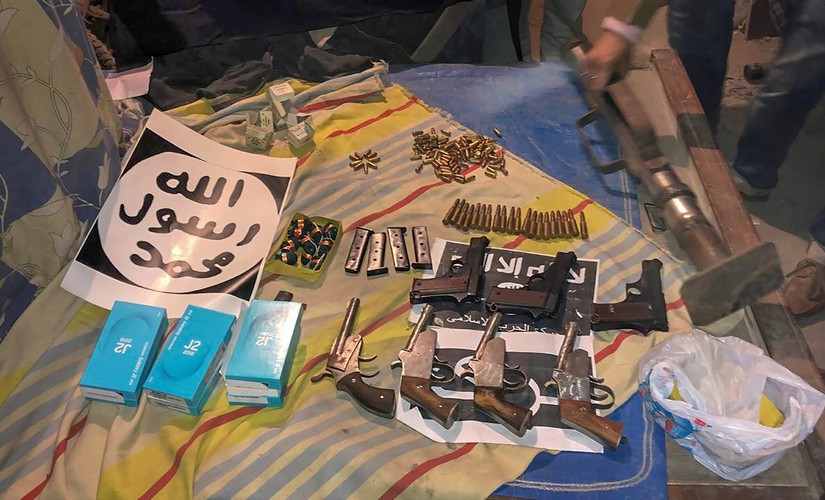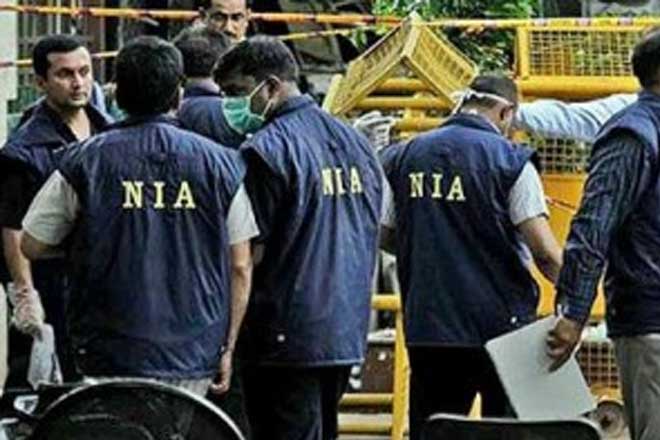
In the summer of 2016, with the spectacular ravines of the Euphrates stretching out in the background, a soft-spoken eye-hospital technician from Mumbai spoke to India from the Islamic State’s capital at al-Raqqa.
“Do you not remember the serial blasts on the trains in Bombay?”
“Have you forgotten the serial blasts in Gujarat? Have you forgotten the destruction in Delhi and in Jaipur?
“We will deliver unto you a reckoning far more terrible than these… and will wage war upon you until polytheism is destroyed in India, and Allah’s rule is established,” he warned.
Like most of the 70-odd Indians who went to fight among the ranks of the Islamic State, Abu Rashid is almost certainly interred under the ruins of Raqqa or Mosul. But their dystopia didn’t.
Wednesday’s arrests by the National Investigations Agency in Delhi and Uttar Pradesh, preempting what officials say were plans to stage bombings in New Delhi over the New Year, demonstrate the Islamic State’s jihadist call is seducing some young Muslims in a time of deepening communal fractures.
Ever since 2009, over 91 jihadist cells have been dismantled by the NIA, which deals mainly with cases having pan-India significance; 63 of those have come since 2015. The Islamic State has been the biggest single contributor to this basket with 24 cases. Twenty-three of these cells were from Kashmir while 43 included other jihadist groups put together.
Wednesday’s arrests have provided some important insights into the nature of the threat. Incensed by what he perceived to be growing state-abetted violence against Muslims, NIA sources say, Delhi-born cleric Mufti Muhammad Suhail — code-named Hazrat or Prophet — mobilised young men and recruited them through his mosque in Amroha.
The cell, the NIA believes, was mentored by an Islamic State supporter overseas, likely in Pakistan — though they have so far been unable to dig out evidence of his identity through the mass of encrypted messaging the group used to communicate.
Earlier Islamic State cells in India have had little operational success. Barring a 17 March, 2017, bombing on board a Bhopal-Ujjain bus, there has been no operation of significant scale.
But this time, the cell meant business. Helped by nothing but internet research, NIA investigators believed, the men had gathered 25 kilogrammes of potassium nitrate, ammonium nitrate, sugar and sulphur — easily turned into low-grade explosives — meant to be packed inside metal lunch-boxes, and detonated using simple remote-controlled devices. The cell had gathered 12 pistols, 150 rounds of ammunition, and even assembled a simple rocket-launcher.
Put simply, this the first Islamic State group that had acquired the necessary elements for true lethality. Had the Telangana Police’s counter-terrorism unit, regarded as the most sophisticated operational unit of its kind in India, not broken into their digital conversations, this New Year would have looked very different.

Muhammad Suhail may have been a cleric, as was his aide and alleged weapons-procurer Saqib Iftekar, but the men the two recruited weren’t. Delhi resident Anas Yunus, alleged to have purchased the electrical components for the bombs, studies civil engineering at a university in Noida; Zubair Malik, who allegedly bought SIM cards for the plot is in the final year of a Bachelor’s programme in a New Delhi university. His brother, Zaid Malik, also accused of purchasing SIM cards and components, also has a university education.
The brothers Saeed Ahmed and Raees Ahmed, accused of purchasing the explosive material and fabricating the rocket-launcher, run a welding workshop in Islam Nagar.
Also accused are: garments business owner Rashid Zafar Raq, auto-rickshaw driver Muhammad Irshad, and medical-store owner Mohammad Azam. According to investigators, the group even included a middle-aged woman, who was given the charge of safely keeping the ₹7.5 lakh in cash that the group raised among themselves and from their supporters. However, it is unclear if she knew what it was intended for.
From the government’s data, it’s clear that those drawn to the Islamic State’s ideology aren’t the stereotypical madrasa-educated fanatics. Instead, they are members of the Muslim middle class, who the government says are deeply attached to the Indian democracy.
Estimates based on government data show that almost three in four Islamic State suspects arrested on terrorism charges — 68 percent — came from middle-class backgrounds while a similar percentage had a university or post-graduate degree. Eleven percent, a small sub-set, had some kind of religious education.

In interrogations by the NIA, half the suspects said communalism — ranging from riots to compulsory yoga practice — led them to join the Islamic State. Barely half of them cited the global Islamist project that underpins the Islamic State.
Counter-terrorism experts around the world have learned that it doesn’t take more than an internet connection and some common sense to turn those ideas into dead bodies.
His face masked with a white handkerchief, an assault rifle cradled in his lap, and wearing the combat fatigues in which he would be buried, Muhammad Taufiq delivered his only testament in the rolling accent of the Deccan:
“Twenty-five years ago, our enemies destroyed a mosque, but their eyes were not only on the Babri Masjid. These perfidious Hindus will keep changing their tactics until their mission is accomplished — and that mission is the elimination of every last Muslim.”
Three months later, Taufiq was dead, killed in a shootout with an al-Qaeda cell in Jammu and Kashmir. He’d been twice caught trawling Islamic State websites, and counselled by the police in Hyderabad. Failing to make it to Syria, he chose to die in Kashmir.
Like so many other young jihadists, Taufiq wasn’t even born when the Babri Masjid was demolished — and could have chosen a different kind of future. His father works at the Department of Atomic Energy’s heavy water plant in Manuguru, a key part of India’s nuclear programme. Like his two other sons, Taufiq’s father has no connection to Islamist politics or jihadism.
Back in 2016, the Indian jihadists who appeared in the Islamic State video made much the same point. Aman Tandel, one of four Thane men who joined the jihad in Iraq, vowed to return home “with a sword in hand, to avenge the Babri Masjid, and the killings of Muslims in Kashmir, in Gujarat, and in Muzaffarnagar”.
The language is designed to provoke rage among Indians — but it should also be a reason for reflection, on why these young men ended up where they did.
Ever since December 1993, there have been successive waves of jihadist recruitment. That tragedy saw the rise of jihadists lead by Abdul Karim Tunda heading into the Lashkar-e-Taiba. Following 2002, another generation formed the Indian Mujahideen. And following the Indian Mujahideen’s collapse, many of its members — among them, Mumbai eye-hospital worker Ahmed — fled for the Afghanistan-Pakistan borderlands, and then Syria.
The small numbers involved in these violent groups, given India’s giant Muslim population, demonstrate their cause has no wide appeal. Yet, communal violence enables and legitimises the operations of successive waves of jihadist groups, drawing in young recruits who believe democracy has betrayed them. That, in turn, feeds and empowers the Hindu-nationalist range.
Each successive cycle of hatred makes the process more powerful, increasing the risk of large-scale violence that could tear the country apart. India’s police and intelligence services can take a bow— but the country needs to find a way to dismantle this perpetual motion machine of hatred if their efforts are to have meaning.



